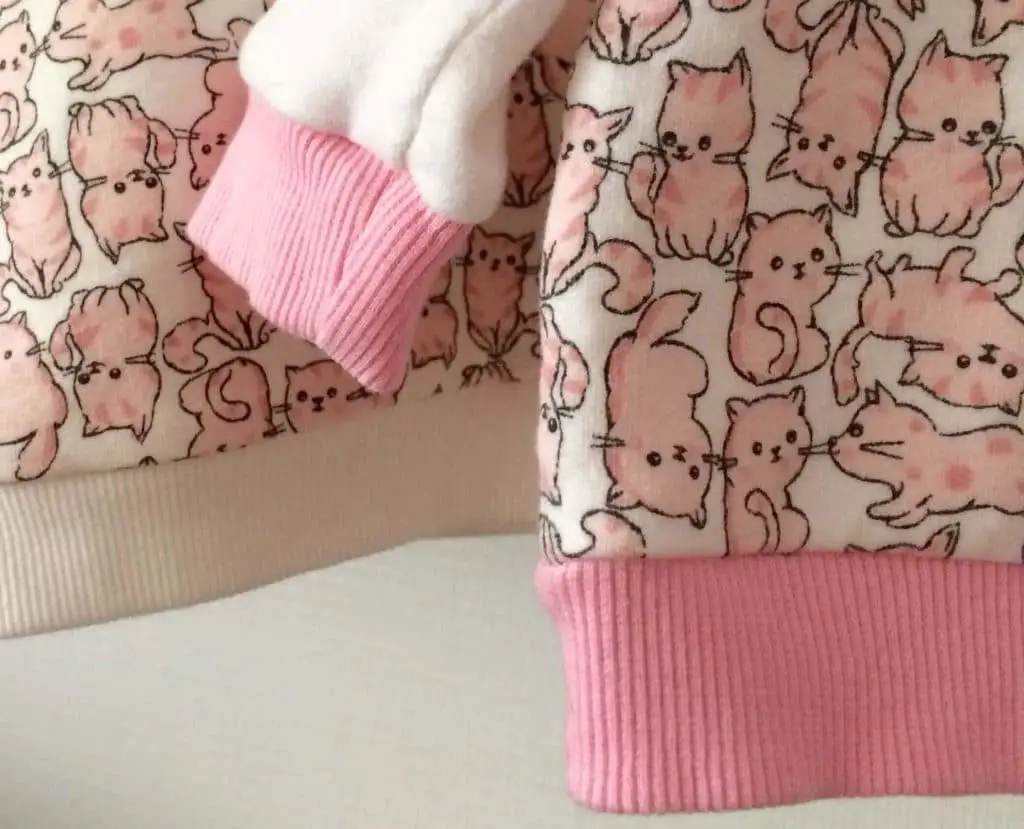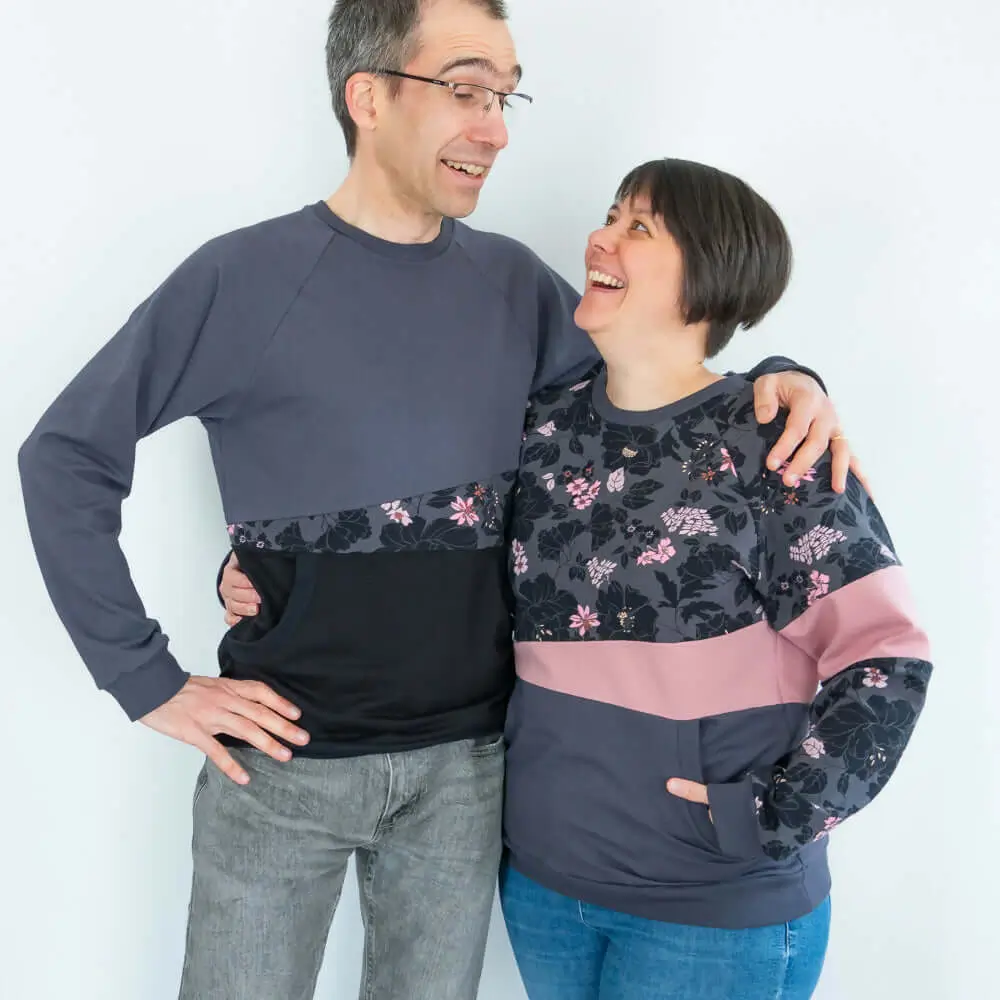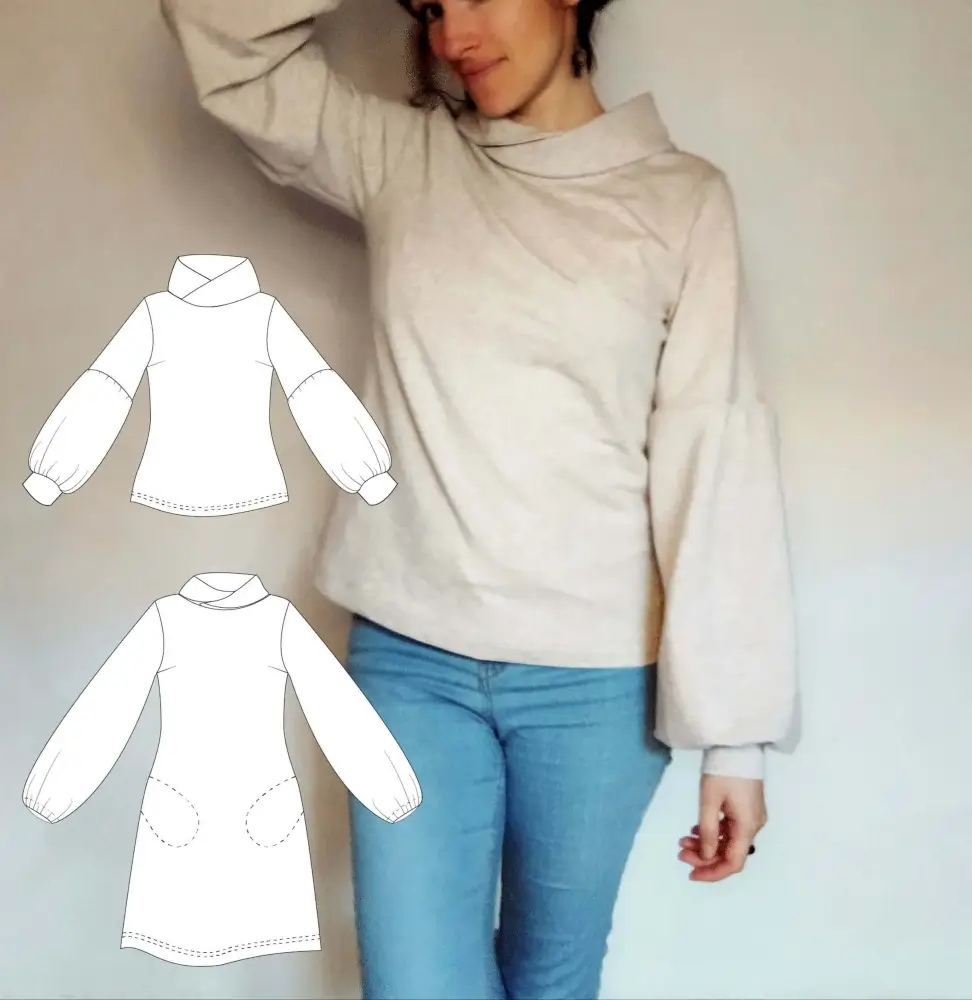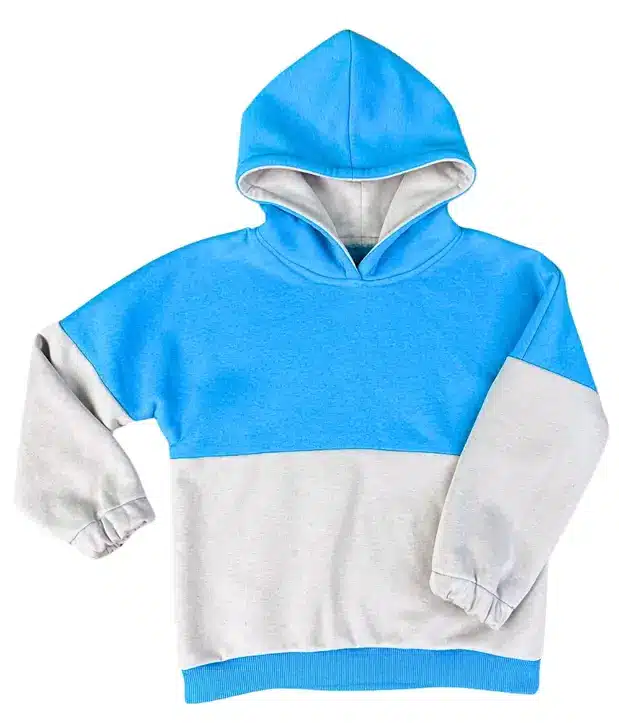
How to sew a warm sweater for winter?
Sweatshirts are a must-have item, comfortable and cosy, and a must-have in your closet for autumn or winter.
You can wear it at home for cocooning Sundays, at the office to keep warm, or outside for a jog or a hike.
It’s also the perfect garment for children: easy to personalize and wash.
Here are a few tips for successfully sewing this all-terrain garment!
Choosing the right fabric
As with most garments, the first rule for sewing a comfortable sweater is to choose the right fabric. To sew a sweater, choose a slightly stretchy jersey, not a warp-and-weft fabric (jersey belongs to the “knitted” fabric family).
You need to be careful with its thickness: a jersey that’s too thin and light will look more like a t-shirt, and won’t be warm enough for winter. Be sure to check the weight of the fabric if you’re buying online, as it will be indicated on the card whether it’s more suitable for t-shirts or sweatshirts.
Many sweaters are sewn with fleece (viscose or cotton) or French terry, which resembles fleece and is scratched on the reverse side, making it particularly comfortable, soft to the touch and warm.
For kids, you can choose a fleece-lined sweatshirt for chilly winter days.
It’s also possible to sew this garment using fleece fabric. However, this will be softer and have less hold than fleece or French terry.

What equipment do you need?
If you own a serger, you can of course use it to assemble your sweatshirts.
If you only have a sewing machine, don’t panic! It’ll do just as well.
Ideally, you should usea special jersey foot (which you can use for all future projects with stretch fabrics) and choose an elastic stitch (such as the zigzag stitch).
When it comes to thread, opt for polyester yarn, which is less likely to break.
Ideas for sweater sewing patterns
A classic sweater
To sew a sweatshirt with a classic shape (round neckline, ribbed cuffs, raglan sleeves), head for Miss Cactus’ Kiwi pattern (for adults) or our Livarot sweatshirt for babies and children.
Sweatshirts are very easy to personalize. You can choose a colorful fabric, use several colors in a colorblock style, opt for contrasting or shiny ribbing…
It’s also possible to add embroidery or sew-on badges at the bottom of the sweater or at the heart.
The Miss Cactus pattern can also be used to assemble a kangaroo pocket, perfect for slipping your hands into, or for storing your cell phone or wallet.
In any case, this is an easy project, accessible to beginners. A good way to get to grips with stretch fabric.

A feminine version
As mentioned above, sweaters are very easy to personalize. The Niki des Patronnes pattern, for example, allows you to vary from the more traditional shape by adding a pretty claudine collar, printed or plain, which will add an original, feminine touch to the garment.
Mapulin by Comme une Fleur is a slim-fitting sweatshirt with balloon sleeves and a crossover collar that rises to the neck, giving it a more chic look than the more traditional shape.

A hoodie
With its oversized shape, large pocket and hood, the hoodie is an ideal piece for keeping warm in winter. It’s also a garment that appeals to the whole family, from adults to teenagers.
To sew it, you’ll need thick, warm fleece. You can follow the Clic Pattern to make your own hoodie.
And for kids, our in-house “Rollot” pattern is perfect!

A fleece sweater
If you like soft fabrics, you can also choose to sew your sweater with fleece. For example, use a printed fabric and a plain one.
Atelier Adriette’s Sherpa model can be used to make a sweater fastened with snap buttons.
For children, you can sew Titus an all-terrain pattern for a comfortable sweater that’s accessible to beginners.




